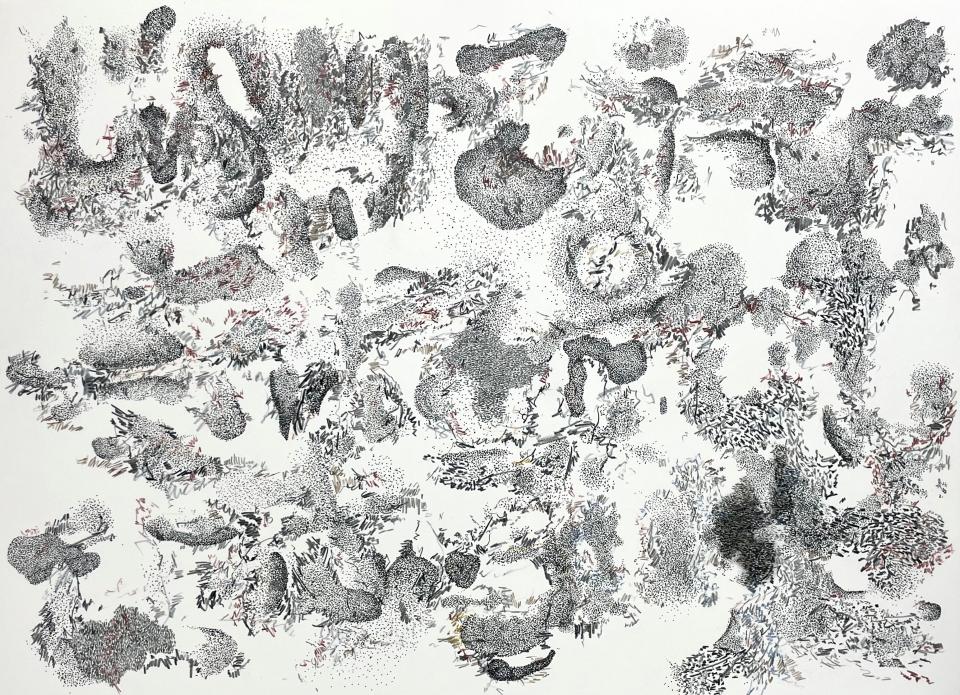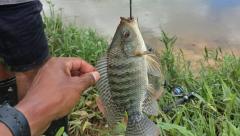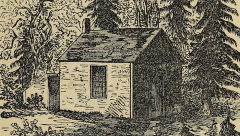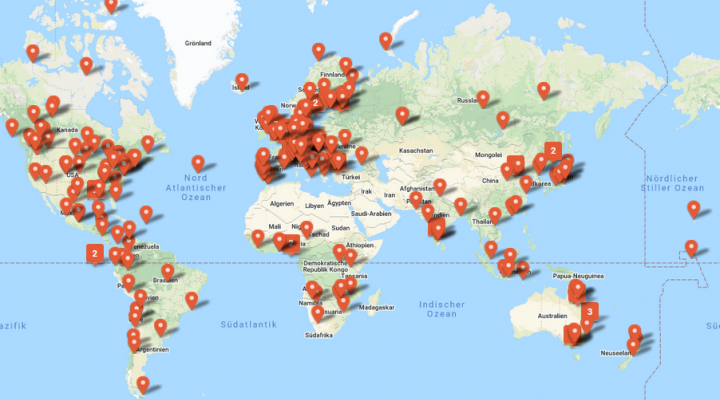About this collection

Sort sol (sand), 2024. Pen, coloured pencil, paper. Artwork by Toshiaki Hicosaka, commissioned by the Department of Global Studies, Aarhus University. The artist visualises his multispecies epistemology of recognizing starlings’ murmuration while freeing himself from established linguistic concepts of bird sounds embedded variously in local cultures.
Sort sol (sand), 2024. Pen, coloured pencil, paper. Artwork by Toshiaki Hicosaka, commissioned by the Department of Global Studies, Aarhus University. The artist visualises his multispecies epistemology of recognizing starlings’ murmuration while freeing himself from established linguistic concepts of bird sounds embedded variously in local cultures.
© 2024 Toshiaki Hicosaka
Used by permission.
The copyright holder reserves, or holds for their own use, all the rights provided by copyright law, such as distribution, performance, and creation of derivative works.
This thematic collection features articles on events in environmental history understood through a multispecies intellectual history perspective. While the turn towards the more-than-human has been a strong presence in disciplines like geography, anthropology, and literary studies for close to a decade, it has received little recognition by intellectual historians with a few, notable exceptions. In this light, the new field of multispecies intellectual history (MIH), proposed by the project Unearthing Multispecies Intellectual History, challenges the foundation of “intellectual” history. That is, the assumed superiority of the autonomous human mind and its ability to reason on its own.
MIH emerges in a post-European Enlightenment paradigm where historical ideas and thought acknowledge their corresponding influences from realms beyond society and reasoning; here, they open their embrace to emotion, sensations, physical matters, and nonhuman actors. While doing so, MIH discerns epistemologies that surface out of encounters among plural ontologies, cosmologies, and historicities of heterogenous cultures and natures across time and space beyond the modern West. This collection therefore actively pays attention to cases in various regions of the world at the crossroad of area studies—with understanding of local languages—and the environmental humanities. The diversity of environments, people, and organisms call for a diverse MIH. The importance of MIH follows from the epistemic injustices inherent to intellectual history’s own history. In the present context of planetary crisis and ecological collapse, we are faced with a heightened urgency to situate our historical inquiries in a decolonial commitment to pluralism. This means recognizing other ways of defining and understanding the human and the nonhuman, and deconstructing or widening what is defined as intellectual per se.
MIH and its methodology is not yet singularly defined and fixed. It would be a field whose methodologies could morph and diverge much like how Shuvatri Dasgupta has discussed the potentiality of a “nonhuman intellectual history” (Journal of the History of Ideas Blog). As Donna Haraway reminds us, “we need stories (and theories) that are just big enough to gather up the complexities and keep the edges open and greedy for surprising new and old connections” (Environmental Humanities). The Arcadia collection of multispecies intellectual history opens the space of possibilities for uncovering such (hi)stories. This multispecies entanglement destabilizes the illusion of a dichotomized separation and hierarchies between humans and nonhumans. It recognizes the role of the nonhuman in different ways of understanding the world.
To do so, we may experiment with established and new methodologies to unearth, analyze, and theorize the epistemological process behind an “environmental” event situated in a specific historical context. Case studies that the curator and the collaborators of this collection are working on include slime moulds’ role as an actor of ANT in epistemology of the Japanese polymath Minakata Kumagusu during his environmental activism in 1906–1912 and epistemological negotiations of ecology in colonial Zambia between local populations, tsetse fly, and British colonial scientists and administrators in the aftermath of the 1925 Native Reserves Act. On further examples of questions, visit the collection’s call for papers.
This collection is curated by Eiko Honda at Aarhus University.
To submit, please download and follow the guidelines document at the bottom of this page.
The launch of this collection is part of the project Unearthing Multispecies Intellectual History: Earthing the Trajectories of Area Studies, funded by the Aarhus University Research Foundation and the Rachel Carson Center for Environment and Society (2023–2025). For more information, visit: https://cas.au.dk/en/UMIH/.
The collection is created in collaboration with Rithma Kreie Engelbreth Larsen (Intellectual History, Aarhus University), Jeremy Farr (Archaeology, University of Queensland), Diego Molina (Geography, Royal Holloway, University of London), Sonia Contera (Physics, University of Oxford), Hatib Abdul Kadir (Global Studies, Aarhus University), Ryan Mealiffe (Medieval History, University of Oxford), Aike Peter Rots (Japanese studies and religious studies, University of Oslo), and Toshiaki Hicosaka (Art and Child Studies, Kyoto University of the Arts).
 |
Freshwater Fish Invasion as Deliberate Neglect: Unpacking Multispecies Colonialism in West Papua Kadir, Hatib A. • Arcadia, Autumn 2025, no. 10 |
 |
Multispecies Walden Woods: Reevaluating Thoreau’s Religion Balthrop-Lewis, Alda • Arcadia, Spring 2022, no. 7 |


